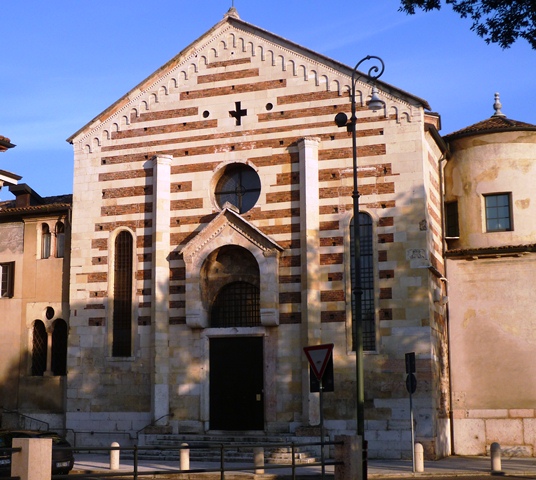The primitive nucleus of the church – the floor and lateral wall plan – probably dates from the V century, when the worship of the first martyr Stephen was introduced in the Veronese Christian community. St. Stephen’s remains were found in 415.
The Romanesque church of St. Stephen was probably the Cathedral of Verona until the VIII century. In the VII century, in fact, the deterioration of the building imposed an almost complete rebuilding project.
Nothing remains of this restructuring, with the exception of the capitals, because they did not sustain heavy damage during the earthquake of 1117 – the entire church, except for the apse, was rebuilt by Romanesque artisans during the first half of the XII century.
The façade is built of brick and tuff, with the usual frame of climbing arches, a luminous central cross, a simple rose window and a small pensile prostyle over the main entrance.
The rose window and lateral windows were opened in the nineteenth century.
The octagonal bell tower, with double lancet windows divided by plates, is completely built of brick and is rather short and heavy.
The interior of the church has three naves, but with a single ceiling, which has a cross, crypt and raised presbytery. The gallery that runs around the apse, with its columns and capitals, suggests that in ancient times there were lateral women’s galleries here. In the lower church, on the right, at the entrance, there is a noteworthy baroque Chapel dedicated to Saints Innocenti. The dome was frescoed by Pasquale Ottino. Ottino also realised the altarpiece, which depicts the Massacre of the Innocents. This Chapel, built between 1618 and 1621, consists of a parallelepiped, upon which a cylinder is fixed. The interior is intensely decorated with mannerist and extremely refined stuccoes. The frescoes are conserved better in the upper church. To the left of the presbytery, there is a splendid Enunciation and Coronation of the Virgin, by Martino da Verona.
